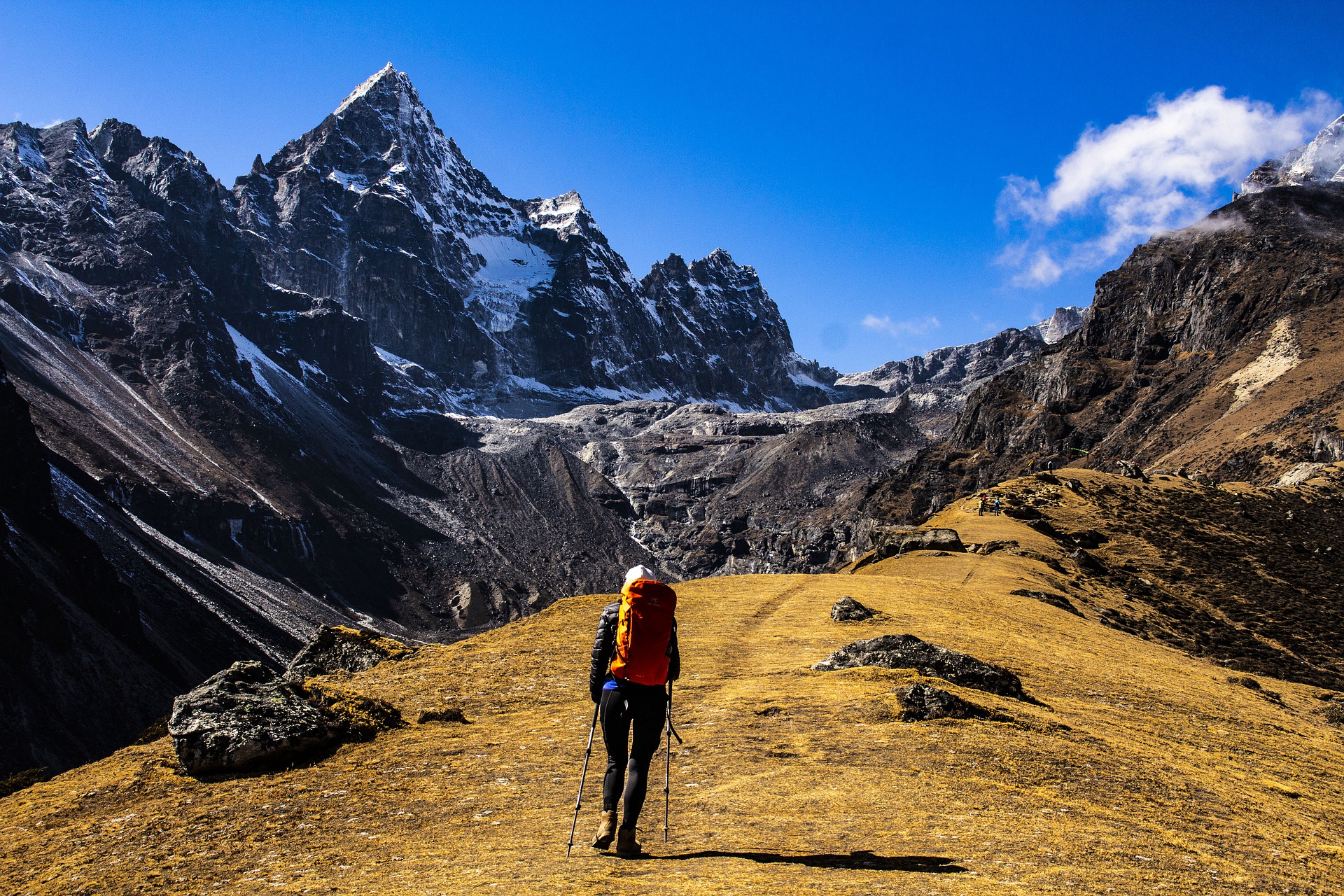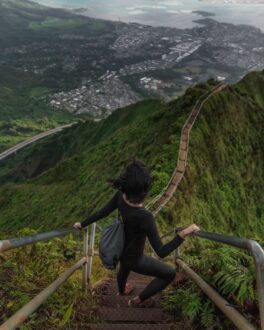What clothes to choose for hiking

If you love the mountains, but aren’t a climber or a rock climber, go hiking! But don’t forget to take everything you need.
Hiking is a toned-down version of mountaineering. There’s no special training required and no special equipment needed. It can offer a way to breathe in fresh mountain air, admire the scenery, and see the peaks enveloped by fog. Some people may find it uncomfortable without headphones and a workout mat, but they’re beneficial.
Spring has finally arrived and it’s time to enjoy the warm days. Let’s say you go hiking in the mountains for one day. To be safe in these mountains, you need to prepare in a few ways. Sharp stones, thorns and sudden weather changes are common in mountainous terrain so it would be a good idea to wear sturdy shoes, bring a hat and keep an eye on the sky.
Layers ensure that you will always have the right clothes on to suit the weather conditions. In this article, we recommend a set of underwear, warm insulating layers and protective gear so you can stay comfortable whatever the weather. Note that there’s no big difference in trekking clothing and regular hiking clothing. The only difference is that you’ll either park your car or get dropped off by the shuttle bus at the side of the trailhead, then once you reach your starting point there’ll be a shelter with all your stuff waiting for you.
You can take fewer items when travelling on a route: it’s easier to wash and dry underwear and socks in a lodge than when camping for the night. Or, alternatively, you can take more: you won’t need to bring along a tent, sleeping bag, rug or fuel. The main thing is to not overdo it, after all, the one of the most rewarding parts of hiking is the light backpack. Taking socks that can be washed every day could help reduce your weight in addition to changing out underwear for three or four pairs daily.
On the route, you can wear clothes made of less durable and lighter materials. When the trail is well-prepared and there’s no need to wade through thorny bushes, dense forest, rocky clamps and there’s no need to cook over a fire, then there is.
There is no one-size-fits-all approach to packing for any journey. When you are choosing what clothes to take on your trip, you need to consider the climate of the destination country and the time of year. There are lots of different climates along the route, but you can reduce them all to three types: hot, moderate or cold. For everyone, the right clothing for your trip is essential.
Base layer
The base layer is the part of a trekking garment that comes into direct contact with your skin. In colder conditions, it typically refers to underwear hidden under other layers of clothing, but in warmer environments you’ll often take off your shirt and T-shirt to get your body temperature down. Additionally, it is advisable to wear long sleeves. It is best to give your skin some protection from the sun with less exposed skin. You always have time to roll up or tuck up your sleeves.
Don’t forget about cotton T-shirts and underpants when you shop. Yes, they’re very comfortable to wear, but cotton clothes get wet and you end up all day in wet clothes. It’s not practical to dry them on the go and even if you’re trying to dry them at home, there’s a chance your damp linen can give you a cold. This is especially true if it’s humid outside too – just let the mountain winds.
Choose underwear constructed from lightweight, quick-drying materials. The moisture-wicking properties make you less likely to overheat and means your clothes will dry quickly. Choose a long-sleeved model that has moisture wicking properties to keep the body dry. If it is a short-sleeved T-shirt, then choose from those models that the manufacturer himself positions as the most lightweight and moisture-wicking models. Thin fabric with no lining on the inside means they won’t keep you warm. You can tell if there is some by checking its weight. Lightweight materials won’t go above 150 g on average. Materials often have Polartec or Coolmax to help with sweat & heat. They are specially designed for people who are active in hot climates.
Lightweight merino wool T-shirts are a good alternative to synthetics when you’re in warm climates. Contrary to popular belief, they work just as well in the heat! Merino wool helps keep your body temperature regulated because its fibers absorb moisture and evaporate it slowly. One disadvantage of wool fabrics is that they don’t last as long as synthetic materials. If you have a long sleeve on that you are wearing for days under your backpack, it can get rolled down on the bottom after several hikes.
Trousers, even thin and light, are unlikely to be needed on routes like these. Instead, you’re better off taking light-colored trousers made of light and thin synthetics. One great option is summer transforming trousers which allow for adjustable legs that can be modified if the weather permits it. The best time to wear shorts is when it is already warm, usually in the morning or later in the evening. The risk of getting burned during this time is still low. Detachable trousers can come in very handy for things like your lunch break, when you want to go back home but don’t want to put on dirty trousers or shoes. It’ll also make it easier if you need to protect your feet from thorns or if the trousers are wet, as they can be washed & dried separately. Dimpling of the fabric means that you avoid too much sweat and an uneven tan. The pants can be unfastened for better air circulation, without endangering your skin from sunburn. This is possible, for example, with trousers such as Norrona Bitihorn or Fjallraven Abisko Midsummer and Fjallraven Abisk.
Insulating layer
Even in hot mountains, it’s important to wear an insulating layer. What to take with you can be tricky.
When is the weather at your location usually like? If you’re not going to be climbing above the tree line on your track, then a fleece jacket or thick thermal T-shirt made of Polartec Power Stretch material should suffice. If you need some guidance, we recommend these thermal underwear from our range. You can wear them during a hike in the early morning or when relaxing by the fire.
A thin down jacket – a short insulated jacket that can be worn on its own or under a thicker parka – is an essential item if the temperature is going to be below freezing. They can be insulated with polyester or feathers. If you need a sweater only for a single day at bivouac and this is usually the case in warmer regions, it’s better to take a down model. It can be lighter than a synthetic jacket, on average 200-250g lighter, and takes up less room in the backpack. If you have the funds to invest in an exclusively bivy insulation then choose from the number of down sweaters with maximum thermal insulation – with FP of down from 800 units
Trekking shoes or boots. Mandatory requirements for shoes: The right shoe should be light, have a waterproof membrane, protect the toe and have a good grip so you can walk wider distances comfortably. A lugged rubber outsole provides stability and protection against injury. For example, the LOMER Company manufactures boots with multidirectional treads. These can take on both rocky and slippery terrains as well as steep climbs.
Pants or shorts. Opt for pants that quickly dry and provide a water resistant finish. The fabric should be light and smooth to not attract the plant life. Companies like Columbia that specialize in outdoor apparel also produce summer-weight, hiking style pants that turn into shorts with the ease of pulling the legs up an inch or two once it gets warmer out.
Headdress. When you’re out in the mountains, take precautions to keep your head covered during the day. You can wear a regular hood or use a baseball cap. But the most convenient for such outings are multibands (or buffs). They can be used as a headband, hat, scarf, or even to protect your neck.
